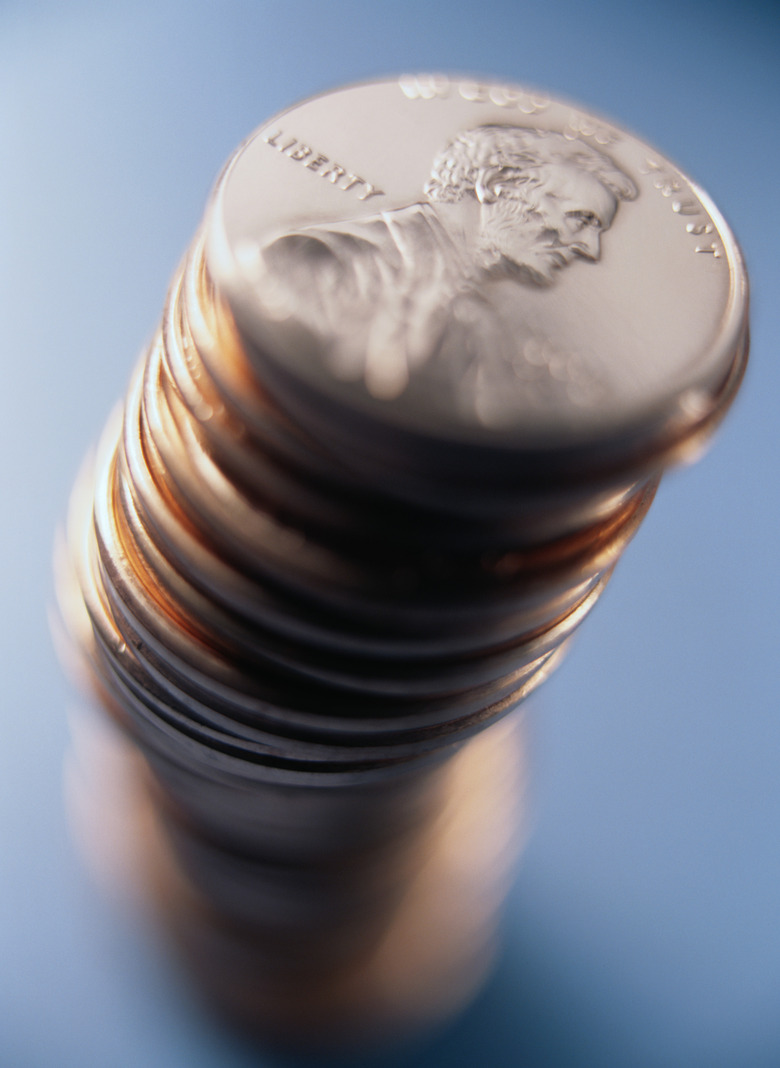How To Make Pennies Turn From Copper To Silver To Gold
A common classroom chemistry experiment, changing a penny from copper to silver to gold demonstrates how elements can be manipulated and combined to produce something else. The heat used to change the penny to gold causes the zinc atoms coating the penny to move in between the copper atoms and create brass, which appears gold. Using pennies that were produced before 1982 ensures that they will contain enough copper for the experiment; pennies produced after 1982 are mostly zinc.
Step 1
Clean the pennies thoroughly. Heat a mixture of sodium hydroxide and powdered zinc in an evaporating dish over a hot plate until it is nearly boiling.
Step 2
Keep the mixture near boiling, and place the pennies in the sodium hydroxide and zinc mixture until they turn entirely silver, about three to five minutes.
Step 3
Remove the pennies using tongs and wash them under running water, removing any pieces of zinc that are stuck to the pennies.
Step 4
Fill a beaker or bowl with water. Light a Bunsen burner and place a silver penny in your tongs. Heat the penny in the flame of the Bunsen burner, rotating evenly, for three to four seconds, or until the penny turns gold. Place the penny in the water until cool. Remove the penny from the water and dry with a towel. Heat the remaining pennies, one at a time, in the same manner, cooling them in the container of water.
Things Needed
- 25 ml sodium hydroxide (NaOH)
- 25 grams powdered zinc, 20 mesh
- Evaporating dish
- Hot plate
- Pennies, pre-1982
- Tongs
- Beaker or bowl
- Bunsen burner
TL;DR (Too Long; Didn't Read)
Remove the penny from the Bunsen burner flame once it has turned gold or the penny will begin to turn back to copper.
Warning
Do not dry zinc-covered pennies with a paper towel; the zinc on the towel may ignite and start a fire. Avoid breathing in any fumes from the sodium hydroxide and zinc mixture. Use caution with the flame of the Bunsen burner. Make sure the pennies have cooled each time before handling them to avoid burns.
Cite This Article
MLA
Crabtree, Cindy. "How To Make Pennies Turn From Copper To Silver To Gold" sciencing.com, https://www.sciencing.com/make-turn-copper-silver-gold-8734616/. 24 April 2017.
APA
Crabtree, Cindy. (2017, April 24). How To Make Pennies Turn From Copper To Silver To Gold. sciencing.com. Retrieved from https://www.sciencing.com/make-turn-copper-silver-gold-8734616/
Chicago
Crabtree, Cindy. How To Make Pennies Turn From Copper To Silver To Gold last modified August 30, 2022. https://www.sciencing.com/make-turn-copper-silver-gold-8734616/
